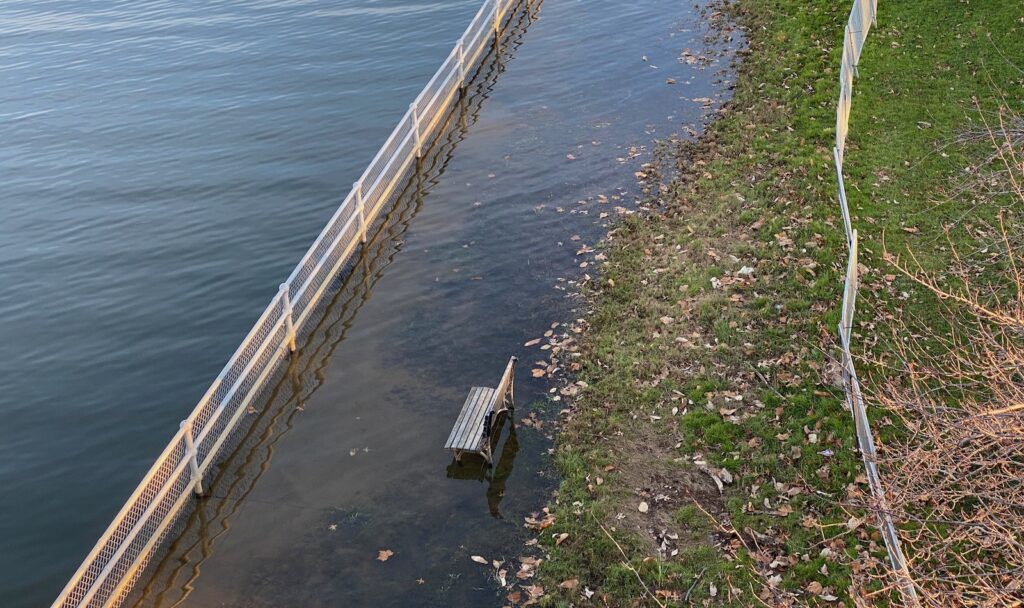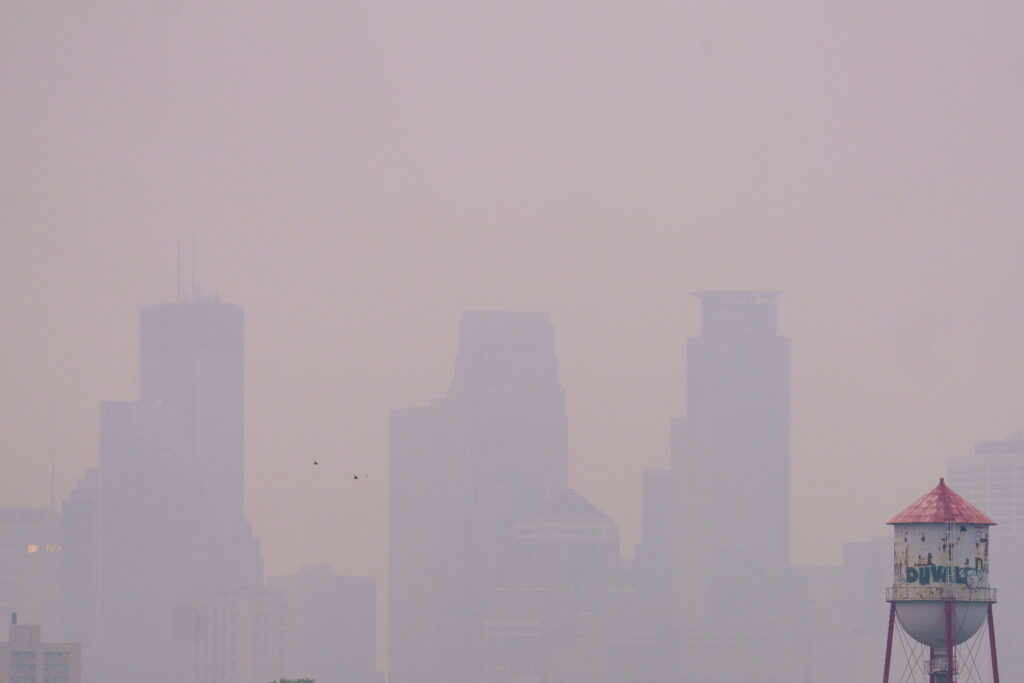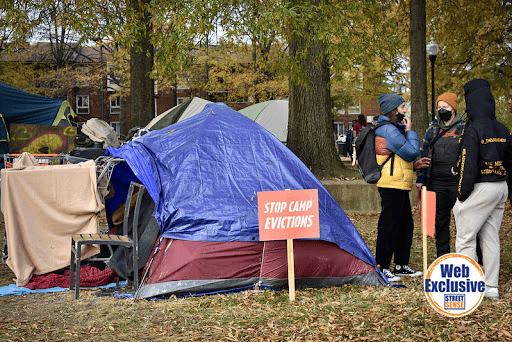As extreme weather persists and increases nationally, floods, excessive heat and poor air quality in the District disproportionately harm those living outside, people of color and people living east of the Anacostia River.
Donté Turner, 37, has experienced the consequences of extreme weather and climate change firsthand while homeless and living outside in the District. Floods and extreme temperatures cause a variety of issues and discomforts, he said.
Turner, a Street Sense Media vendor and artist, prefers living outside to living in a shelter because of past negative experiences and strict occupancy limits due to the coronavirus pandemic. Finding a dry place to stay while it’s raining is one of the more difficult feats. For example, the floods caused by Hurricane Ida in early September displaced several people living outside near him, Turner said, although his tent kept most of the rain out.
“Thank God my tent is strong, but I’ve been through it without my tent,” he said.
Before Turner had a tent, the best way to keep dry in a flood was to find shelter under an awning. But even with a tent, living outside is still accompanied by struggles with outdoor elements.
“I wake up, I’m wet or cold or extremely hot. I can hardly sleep because the mosquitoes keep biting,” he said. “I’ve been through all of that.”
Queenie Featherstone, a Street Sense Media vendor and artist who has lived in her car and couch surfed for the past 13 years, has not experienced living outside in extreme conditions but has witnessed the difficulties many unhoused people face.
“I’ve been fortunate enough to not to have to sleep in the street,” said Featherstone, 62. “I’ve never had to live in the harsh elements like that. My heart does ache for those who have to live like that.”
She wishes she could help unhoused people living outside, she said, especially with the recent flooding in the area.
“I often say, I know I can’t be Wonder Woman, Superwoman, and save everybody,” Featherstone said. “Especially the homeless population. But it does affect me.”
Living outside or in poor housing conditions increases the risk of exposure to pests, insects, mold and extreme heat, all of which can accelerate health issues like asthma, according to Neil Boyer, who chairs NAACP DC’s Environmental and Climate Justice Committee. Health issues caused by poor living conditions also disproportionately affect Black residents in wards 5, 7 and 8, Boyer said.
“These are the kinds of things we need to look at when we’re linking climate change and illness — in an environmental justice perspective,” he explained.
According to a study by the DC Department of Energy and Environment, heat waves are primary instigators of pediatric asthma in the District, a disease which disproportionately affects Black children. According to data from the U.S. Centers for Disease Control and Prevention, 6.5% of white children and 23% of Black children have asthma in the District.
Extreme heat also takes a disproportionate toll in areas with less green space and tree cover, dilapidated buildings, and structures without air conditioning — circumstances prevalent in wards 7 and 8, Boyer said.
Emergency room visit rates for asthma among children living in Southeast are much higher than in Northwest, according to a study by the IMPACT DC Asthma Clinic.
Heat waves also affect older adults, especially those with inconsistent housing, Boyer said. Heat exhaustion and heat stroke are the most common such ailments, according to the U.S. Environmental Protection Agency. Children are also at high risk of heat-related illness because of their still-developing respiratory systems.
Outreach and assistance are vital during heat waves, Turner said, especially in terms of staying hydrated. But at times it’s difficult for unsheltered people to access help when needed, he said, and substantial improvement in that regard is essential.
“People tend not to think about our needs and what would better suit us during climate change,” Turner said.
Natural disaster relief needs to better cater to marginalized groups, experts say
An issue in mitigating how natural disasters disproportionately affect unhoused and low-income populations is improving programs that provide relief, said Sarah Saadian, vice president of public policy at the National Low Income Housing Coalition.
The DC-based organization heads the Disaster Housing Recovery Coalition, a national program that aims to ensure federal disaster recovery efforts reach all impacted households, including people experiencing homelessness, low-income seniors and people with disabilities.
“For the lowest income people, including people experiencing homelessness, they are most at risk during disaster and the least able to access the federal resources that are being provided,” Saadian said. “And that’s largely because those resources are designed with middle-class families in mind and not those households that have greater needs.”
The disaster recovery system in the United States is broken and in need of reform, Saadian said. Lower-income neighborhoods are also at a greater risk of disasters and hazards, she said. For example, in Houston, Texas, 88% of open drainage ditches — which often provide inadequate drainage — are found in minority neighborhoods, which causes these areas to be inundated with floodwater more frequently than wealthier neighborhoods.
The coalition has developed recommendations on how to better serve vulnerable populations and submitted them to Congress, the Federal Emergency Management Agency and the U.S. Department of Housing and Urban Development. Suggested actions include expanding opportunity for public input during the process of restoring communities after disasters; equitably addressing infrastructure needs; and placing a priority on rebuilding destroyed affordable rental homes.
The destruction of affordable housing and homes in general plunges many into homelessness, said Steve Berg, vice president of programs and policy at the DC-based National Alliance to End Homelessness.
“The disaster assistance system could be better about really focusing on getting people back into housing as a high priority,” Berg said.
While the effects of climate change need to be urgently addressed, the immediate solution to assisting those living outside in extreme weather is permanent housing, according to Berg.
“It’s a matter of having the money to do it and having the local know-how to do it,” he said.
While Featherstone has lived in the Washington area for her entire life, she recognizes how extreme weather affects unhoused populations at a national scale.
“Homeless is everywhere,” she said.
This article was co-published with The DC Line.






